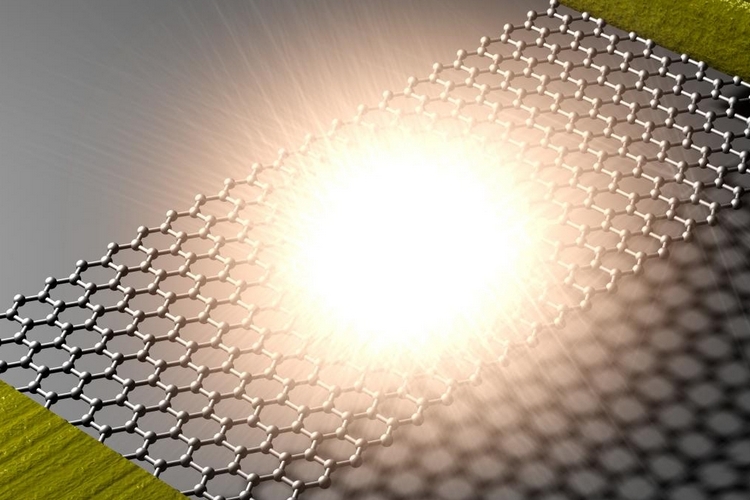Graphene is amazing. And we’ve only just touched on the very surface of what we can do with the wonder material. Here’s another innovation a group of scientists came up with using the extraordinary allotrope: the world’s thinnest light source.
Created by a team of scientists from Columbia Engineering, Seoul National University, and the Korea Research Institute of Standards and Sciences, it’s a light source created from the perfectly-crystalline, two-dimensional form of carbon. While measuring little more than the same thickness as a single atom, it manages to create light that’s visible to the naked eye, opening the doors to future lighting products in downright crazy nano sizes.
To create a filament out of graphene, the team attached small strips (by small, they mean smaller than the width of a human hair) of the material to metal electrodes, suspended them above a silicone substrate, and passed a current through the assembly to cause the graphene to heat up to 2,500 degrees Celsius, causing it to glow brightly. If you’re familiar with graphene, it’s an incredibly tough material, enabling it to withstand the high temperatures that create light without tearing apart. Graphene’s unique qualities also manage to confine heat to a small spot in the center, keeping it from reaching the outer edges where tearing can normally begin.
Because of its size, the graphene-based light emitter can be integrated into chips, making it possible to be used in super-thin, flexible, and transparent displays, as well as electronics for optical communications. The team also demonstrated the new model’s scalability by creating larger-scale arrays of chemical vapor deposited (CVD) graphene light emitters.
You can learn more from the link below.
